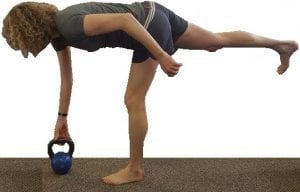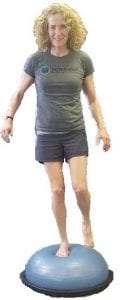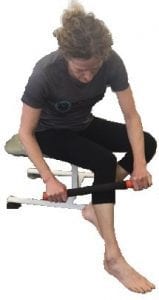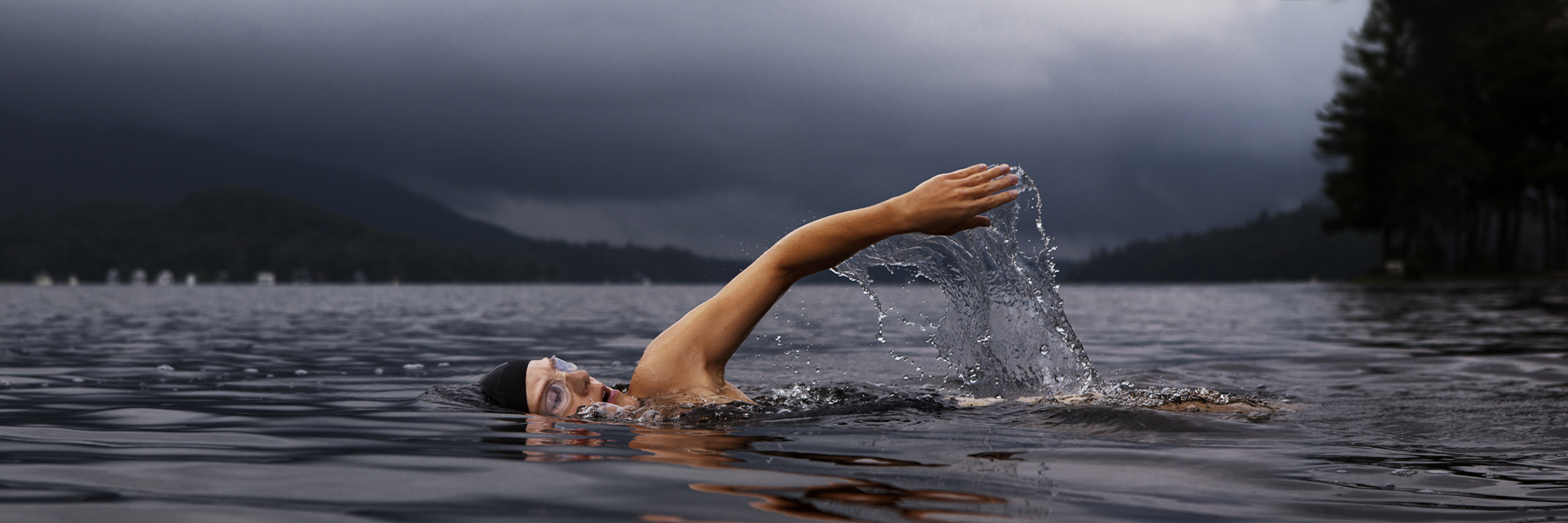Blog
Staying Vertical: Fall Prevention and Trail Running
(originally published on trailrunner.ca)
It is fun to negotiate rocks, roots, narrow pathways and slippery surfaces of the trail until you lose it with a fall. Maintaining focus, wearing trail appropriate shoes and being light on your feet are the main strategies to avoid becoming horizontal while running. From a sports medicine and conditioning perspective there are also a few other things to work on to prevent a crash landing. Optimizing these trainable factors could be the difference between executing a successful corrective maneuver and nursing a sprained ankle (or worse).
Balance
 Having good balance means that you can maintain equilibrium in more challenging situations. Moving quickly over uneven or twisty terrain and experiencing visual compromise such as going from light to shade can definitely increase the balance challenge. Balance can also be negatively influenced with age, fatigue and prior injury.
Having good balance means that you can maintain equilibrium in more challenging situations. Moving quickly over uneven or twisty terrain and experiencing visual compromise such as going from light to shade can definitely increase the balance challenge. Balance can also be negatively influenced with age, fatigue and prior injury.
Exercises to improve balance are:
- Single leg deadlift
- Tandem walking (heel to toe) along a balance beam, log, painted line or tape on the floor. More challenge to go backwards.
- Hands and knees or kneeling balance on an exercise ball (30-60 seconds)
Proprioception
Proprioception is the position sense that gives feedback about where our body is in space. The mechanism of proprioception helps protect our muscles and joints from injury. For example, when the ankle rolls excessively inward because of uneven terrain our proprioceptive system reflexively causes muscle contraction to protect the lengthened ligament and stabilize the joint. Because soft tissue injury and pain negatively impact proprioception, it is important to retrain this system after sprains and strains.
 Exercises to work on proprioception are:
Exercises to work on proprioception are:
- Wobble board circles, both directions, eyes level
- Single foot hopping in a quadrant with precision landing important
- Single foot hop down from a box with good alignment on landing
Reaction Times
The time it takes for our body to respond to a stimulus, like a wobbling rock under our foot, is our reaction time. The slower our stabilizing reaction takes, the greater the potential for injury. This is an inherent ability but can be improved with practice. Proper rehabilitation after injury, mental alertness, proper warm up and appropriate clothing in cold temperatures are all considerations in improving a reaction interval.
Exercises to improve lower body reaction time are:
- Standing on one foot partner ball toss
- Sustained balancing on unpredictable surface like wobble boards and BOSU balls
- Kicking a ball back and forth with a partner or against a wall; soccer drills
Lower Body Joint Mobility
 Stiff knees, hips and ankles can decrease joint resilience, impair balance and impact agility. Ankle and hip mobility are commonly reduced in experienced runners due to the repetitive and generally linear motion of the sport.
Stiff knees, hips and ankles can decrease joint resilience, impair balance and impact agility. Ankle and hip mobility are commonly reduced in experienced runners due to the repetitive and generally linear motion of the sport.
Exercises to improve mobility are:
- Wobble board circles
- Deep squats
- Myofascial techniques like rolling to help release tight deep hip rotators and calf muscles
Multidirectional Control
Being physically able to move well in all planes of motion at a moment’s notice can be a handy ability when trying to stay on your feet. Moving sideway to avoid a puddle or root, or hopping diagonally from rock to rock are common maneuvers on the trail.
Exercises to improve this control are:
- Basket weave running drills
- Sideways and diagonal hops off and on the BOSU ball, more advanced to do on one leg
- Pylon drills with directional change
Running is more fun than rehab. Stay on your feet!
— By Louise Taylor






